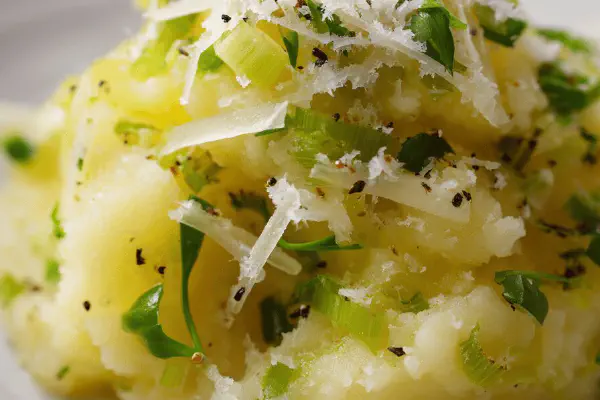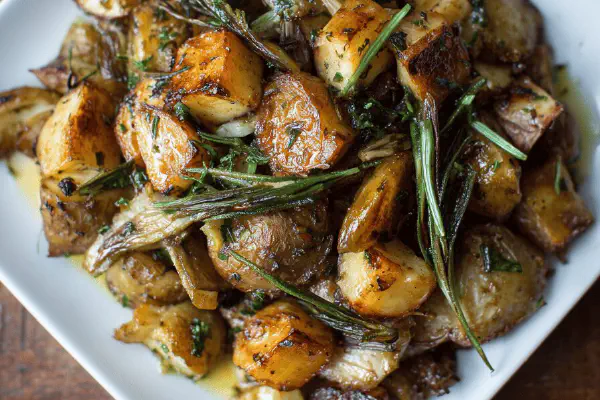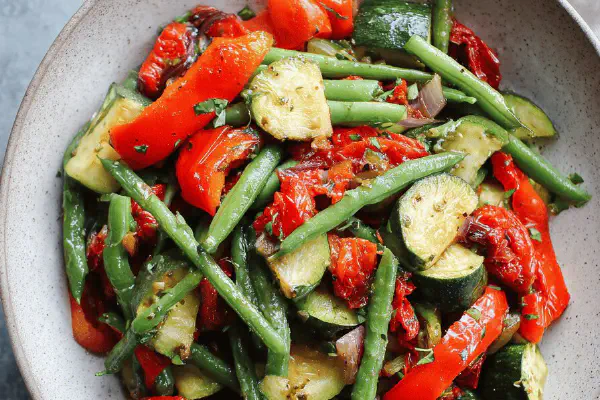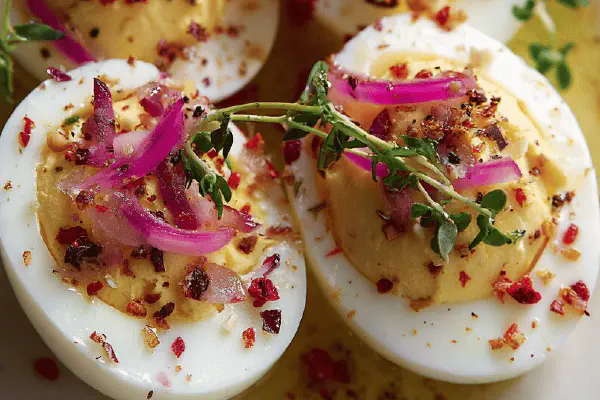Celery Purée with Parmesan and Leek

By Emma
Certified Culinary Professional
Ingredients
- 1.2 litres celery root peeled and cubed
- 600 ml celery stalks sliced thin
- 4 garlic cloves peeled
- 1 medium leek, white and light green parts sliced
- 45 ml olive oil
- 100 ml grated Pecorino Romano cheese
- Salt and cracked black pepper to taste
- Optional pinch of nutmeg
About the ingredients
Method
- Set up a steaming basket over simmering water. Place the cubed celery root, celery stalks, and garlic in, cover tightly. Steam gently for about 25 minutes, testing tenderness: a sharp knife should slide in without resistance; if it still feels fibrous or crunchy, keep steaming, checking every 3-5 minutes. Overcooking can make the purée gluey.
- Meanwhile, heat olive oil in a skillet over medium heat. Add sliced leek, stirring often. Watch for soft edges and slight caramelization, about 8 minutes. Take care not to burn; burnt leek turns bitter instantly.
- Transfer steamed veggies and garlic into a food processor. Add sautéed leek (reserve a bit for garnish if you like), Pecorino cheese, and start pulsing. Don't rush pureeing — stop frequently to scrape down sides. Texture should be velvety, not stringy or chunky. If too stiff, add hot water or a splash of vegetable broth to loosen.
- Season with salt, pepper, and a whisper of nutmeg if on hand. Taste. Parmesan is punchy; Pecorino is sharper, so adjust salt accordingly. The purée should hold together but still feel light on the tongue.
- Serve warm, garnished with remaining leek and cracked pepper. Can cool and refrigerate; reheat gently to keep texture intact.
Cooking tips
Chef's notes
- 💡 Peeling celery root pays off. Use a sharp knife. Fibrous chunks kill the texture. Watch steam times closely; stalk slices cook faster than root. Test with a knife. Slight resistance only; don’t rush. Over-steam, purée gets gluey, sticky. Garlic softness signals done but not mush. Keep steaming intervals short, 3-5 minutes checks.
- 💡 Sauté leek low heat; watch edges for caramel color. Too fast burns bitter quick. Stir often but gently. Target slight browning for sweetness. Reserve some for garnish to add crunch and contrast. Leek’s dark greens too tough; toss early. Clean properly—sand hides in folds, no shortcuts here.
- 💡 Puree in short pulses. Avoid overheating; gluey texture ruins mouthfeel. Scrape bowl often; uniform texture means no strings or lumps. Thin with hot water or veg stock if too thick. Nutmeg subtle but adds earthy contrast. Salt carefully because Pecorino is sharp and salty already; add in increments. Test often before final.
- 💡 Olive oil choice works better than butter for lighter richness, but small knob of cold butter at end adds silk if craving more fat. Pecorino sharpness punches salt balance versus Parmigiano or Grana Padano which need less salt adjustments. Garlic roasted instead of steamed shifts aroma sweeter; experiment with herbs for fresh green notes.
- 💡 Gentle steaming crucial. Boiling water tricks you; veggies get waterlogged, flavor dulls. Texture cues are best guidance. Purée should hold but feel light and airy. Reheat gently to keep emulsion stable. Microwaves risk fat separation. Keep notes on timing per batch; no two celeriac roots alike. Improvisation makes difference here.
Common questions
How to tell when celery root is done?
Press knife in. Slight bite but no crunch. Fibrous means keep steaming. Overdone feels mushy. Watch garlic softness too. Use senses not timer alone.
Can I substitute Pecorino Romano?
Parmigiano works but less salty. Grana Padano milder too. Adjust salt accordingly. Cheese sharpness key. If dairy-free, omit cheese; add nutritional yeast or miso for umami punch instead.
What if purée is gluey?
Likely overprocessed or steamed too long. Pulse not blend. Add hot water or broth to loosen. Reassess texture mid-process. Timing crucial. Use sturdy masher or stick blender if no processor.
How to store leftovers?
Refrigerate in airtight container. Can cool before fridge. Reheat slow on stovetop or low microwave bursts. Avoid overheating or fat breaks. Freeze in portions but expect slight texture change. Best eaten within 3 days fresh.



